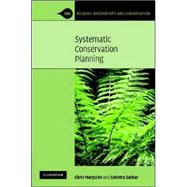
What is included with this book?
| Acknowledgments | p. viii |
| Introduction | p. 1 |
| Conservation-area networks | p. 2 |
| What do we mean by biodiversity? | p. 5 |
| Systematic conservation planning | p. 8 |
| Summary | p. 16 |
| Biodiversity surrogates | p. 19 |
| True and estimator surrogates | p. 20 |
| Establishing the adequacy of an estimator-surrogate set | p. 22 |
| Traditional species-based surrogates | p. 27 |
| Systematic surrogate sets | p. 30 |
| Surrogacy and spatial scale | p. 42 |
| A protocol for the identification of an adequate surrogate set | p. 43 |
| Diversity of ecological processes | p. 44 |
| Summary | p. 45 |
| Data collection | p. 47 |
| Areas and features | p. 47 |
| Sources of data | p. 51 |
| Collecting new data with field surveys | p. 56 |
| Summary | p. 76 |
| Data treatments | p. 79 |
| Conceptual framework | p. 79 |
| Multi-variate pattern analysis | p. 83 |
| Heuristic models | p. 90 |
| Regression models | p. 93 |
| Machine-learning methods | p. 100 |
| Summary | p. 103 |
| Conservation-area networks | p. 105 |
| The role of conservation-area networks | p. 105 |
| The goals of networks: representativeness, persistence and economy | p. 108 |
| Selecting networks: complementarity | p. 112 |
| Selecting networks: rarity and adjacency | p. 120 |
| Subsidiary goals: flexibility, transparency, modularity, genericity and irreplaceability | p. 121 |
| Algorithms for the selection of networks | p. 124 |
| The trouble with scoring and ranking procedures | p. 127 |
| Summary | p. 129 |
| Persistence and vulnerability | p. 131 |
| Incorporating biological processes | p. 132 |
| Viability analysis | p. 135 |
| Targets for representation | p. 151 |
| Formal decision analysis | p. 162 |
| Summary | p. 166 |
| Satisfying multiple criteria | p. 169 |
| Iterative- and terminal-stage procedures | p. 171 |
| The valuation framework | p. 172 |
| Non-dominated alternatives | p. 176 |
| Refining non-dominated sets | p. 180 |
| Sensitivity analysis | p. 188 |
| Summary | p. 194 |
| Systematic conservation plans | p. 197 |
| Complementarity by inspection in the Nullarbor region, Australia | p. 197 |
| Complementarity using species records in Quebec | p. 205 |
| A marine conservation plan for the California Channel Islands, United States | p. 209 |
| A conservation plan for the Cape Floristic Region of South Africa | p. 214 |
| A conservation plan for Papua New Guinea | p. 219 |
| Summary | p. 225 |
| Conclusions | p. 227 |
| Coping with uncertainty | p. 228 |
| Practicing conservation science in a complex world | p. 231 |
| Future directions | p. 233 |
| Summary | p. 238 |
| References | p. 239 |
| Index | p. 265 |
| Table of Contents provided by Ingram. All Rights Reserved. |
The New copy of this book will include any supplemental materials advertised. Please check the title of the book to determine if it should include any access cards, study guides, lab manuals, CDs, etc.
The Used, Rental and eBook copies of this book are not guaranteed to include any supplemental materials. Typically, only the book itself is included. This is true even if the title states it includes any access cards, study guides, lab manuals, CDs, etc.